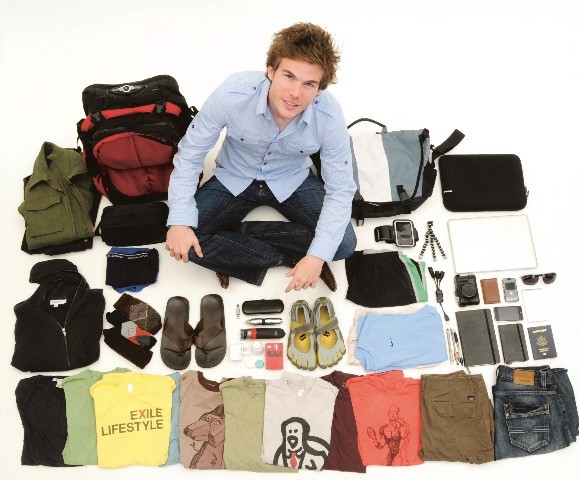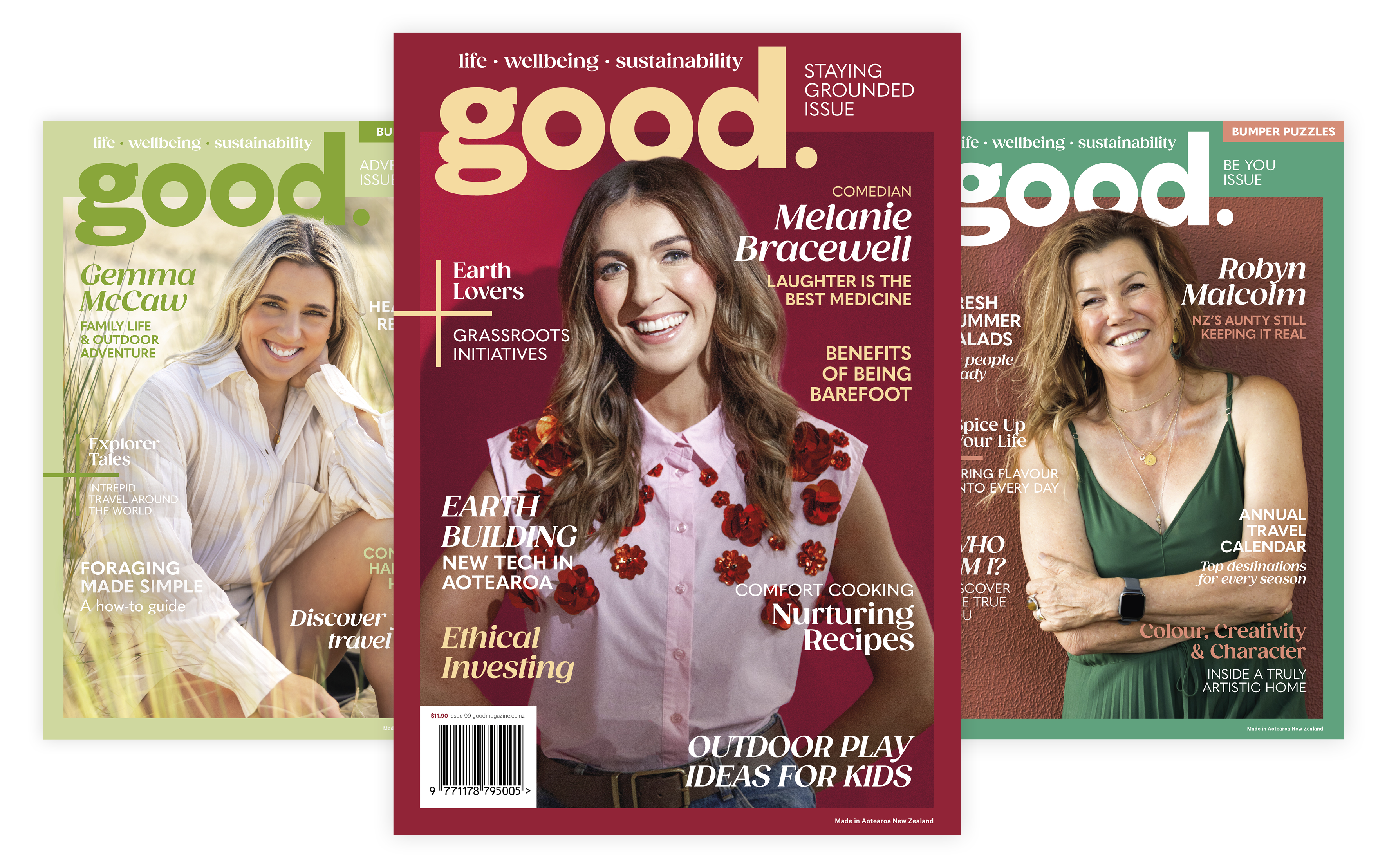Two prominent Canadians, biologist Rick Smith and environmental advocate Bruce Lourie, subjected their own bodies to a series of tests to uncover the dangerous toxins that exist in common household items. The pollution load in their bodies before and after the experiment was downright frightening.

You wouldn’t drink a bottle of mercury or douse yourself in Teflon, but eat a tuna fried steak in a non-stick pan and you’re exposing yourself to both. Research shows that significant levels of toxic substances can leach out of everyday items. How do these toxins get inside us and how do they impact our health? More importantly, what can we do about it?
A new kind of pollution
There are many thousands of chemicals in commercial use today and only a fraction of them have been tested on humans for safety.
It’s obvious that we live in a polluted world, but it’s the pollution inside us that is insidious. We cannot see it; we often have trouble measuring it and it is very difficult assigning specific damage to chemicals that are so widely used. Take for example bisphenol A (BPA), a harmful chemical found in many products we use every day, including baby bottles, the linings of food and drink cans, cash register receipts and reusable sports bottles made from hard plastic. More than 150 peer-reviewed scientific studies have found potential health effects from exposure to BPA, including breast and prostate cancer, attention deficit hyperactivity disorder and a wide range of developmental problems.

“So why don’t we experiment on ourselves?”
What began as an offhand joke between biologist Rick Smith and environmental advocate Bruce Lourie turned into a two-year project, and now a bestselling book: Slow Death by Rubber Duck. After all, what better way to investigate and demonstrate the impact of daily life on the pollution load our bodies carry than to deliberately ingest a whole bunch of these suspect substances and measure whether they do, in fact, linger in the body?
To carry out the testing, Rick and Bruce spent a week in an apartment exposing themselves to a variety of pollutants. Rick investigated phthalates (in toys and personal care products); bisphenol A (found in plastics); brominated flame retardants (found in upholstered products and electronics) and triclosan (the active ingredient in many antibacterial products). Bruce experimented with non-stick chemicals, mercury (one of the oldest toxins known) and pesticides.
The experiments mimicked what many people normally do in the course of any given day. Rick showered and washed dishes, he drank coffee in a polycarbonate cup and ate lunch heated in a container in a microwave. Bruce ate tuna and then a little more tuna and had the test room carpet sprayed with a stain protector.
Blood and urine samples were collected before and after these and a variety of similar everyday activities. At the end of the week these samples were sent to a reputable British Columbian laboratory for analysis.
Through doing things that people do every day, Rick increased his urine levels of monoethyl phthalate (MEP) 22 times, his levels of bisphenol A 7.5 times and his levels of triclosan a mindblowing 2,900 times. Bruce increased his mercury levels almost 2.5 times.

Toxic nation
Far from being the rock or island in the Simon and Garfunkel song, it turns out that the best metaphor to describe the human body is a sponge, say Rick and Bruce. We’re permeable. We’re absorbent. And Toxic Nation (Rick and Bruce’s campaign to test Canadians for measurable levels of pollutants in their bodies) tries to measure the nasty things the human sponge has soaked up.
The project applies scientific testing techniques – previously restricted to the pages of obscure scientific journals – to the raging public debate about what pollutants we are exposed to, in what amounts and from which sources – and tells us what we can do about it. Since 2005, Environmental Defence Canada has tested the blood and urine of more than 40 Canadians for over 130 pollutants. People from all walks of life, of all ages, men, women and kids from different parts of the country and different ethnic backgrounds; they all turned out to be polluted to some degree.
The whole concept of ‘pollution’ that we carry around in our heads needs updating. Belching smokestacks. Sewer outfalls. Car exhaust. For most people these are the first images that come to mind when the word pollution is mentioned. It’s still seen as an external concern. Something floating around in the air or in the nearest lake. Out there. Something that can be avoided.
As the testing makes clear, however, the reality is quite different. Pollution is now so pervasive that it’s become a marinade in which we all bathe every day. Pollution is actually inside us all. It’s seeped into our bodies. And in many ways, once in, it’s impossible to get out.

Baby bottles. Deodorants. A favourite overstuffed sofa. These items, so familiar and apparently harmless, are now sources of pollution at least as serious as the more industrial-grade varieties described above. The marketleading baby bottles in North America are made of polycarbonate plastic, and they leach bisphenol A, a known hormone disruptor, into their contents. Deodorants – and nearly every other common product in the bathroom – can contain phthalates (pronounced tha-lates), which have been linked to a number of serious reproductive problems. Phthalates are also a common ingredient of vinyl children’s toys. Sofas and other upholstered products contain brominated flame retardants and are coated with stain-repellent chemicals, both of which increase the risk of cancer and are absorbed by anyone sitting on a sofa or chair to watch Friday night TV.
The Toxic Nation tests identified all of these chemicals, and many more, in the bodies of the Canadians who took part.

The truth of the matter, say Rick and Bruce, is that toxic chemicals are now found at low levels in countless applications, in everything from personal care products and cooking pots and pans to electronics, furniture, clothing, building materials and children’s toys. They make their way into our bodies though our food, air and water. From the moment we get up from a good night’s sleep under wrinkle-resistant sheets (which are treated with the known carcinogen formaldehyde) to the time we go to bed at night after a snack of popcorn (the interior of the bag being coated with an indestructible chemical that builds up in our bodies), pollution surrounds us.
Far from escaping it when we shut our front door at night, we’ve unwittingly welcomed these toxins into our homes in countless ways. In a particularly graphic example, it’s been estimated that in the time the average woman grabs her morning coffee, she has applied 126 different chemicals in 12 different products to her face, body and hair.
It’s as if we’re all guinea pigs in vast and uncontrolled experiment.
And the result? Time will surely tell, but in the meantime, there is a large and growing body of scientific research linking exposure to toxic chemicals to many ailments that plague people, including several forms of cancer, reproductive problems and birth defects, respiratory illnesses like asthma, and neuro-developmental disorders such as attention deficit disorder (ADHD).

In the case of mercury, for instance, medical researchers have even discovered potential health risks from very low, continuous doses. One of the most famous studies, conducted by Dr. Philippe Grandjean and his team in the Faroe Islands, found “cognitive deficit” and “impaired motor skills” in children with very low levels of mercury in their blood. The mercury the children were consuming did not come from a local factory dumping waste into or near fishing grounds; it was simply the background mercury found in the ocean today.
These studies – including those indicating that foetuses and infants are susceptible to even the tiniest amounts of mercury in their developing brains – have led to a major revamping of mercury health standards and worldwide warnings for women not to eat any high-mercury fish while pregnant.
It’s taken a while, but the alarm bells are starting to sound, say Rick and Bruce. Doctors, nurses, mothers and community activists are increasingly questioning why these and other potentially toxic substances can be put into products without our knowledge – since we don’t know if they will harm us. Legislators are just beginning to listen, but it’s up to ordinary people and everyday consumers like us to keep reminding them that these issues matter.
– Adapted with permission from Slow Death by Rubber Duck: How the toxic chemistry of everyday life affects our health, by Rick Smith and Bruce Lourie, Random House 2009. For more information, go to www.slowdeath byrubberduck.com

What can I do today?
Are you casting your eyes around your home with newfound suspicion, wondering what the heck you can do? Here are 10 simple actions:
1 Avoid personal care products with heavy artificial fragrances, especially those with fragrance or parfum listed as ingredients.
2 Avoid products labelled antibacterial or including triclosan, and be wary of names such as Microban, Biofresh or Irgasan DP300. Wash your hands the old-fashioned way, with a 30-second lather of soap and water.
3 Use glass or BPA-free plastic (including baby bottles) and don’t put plastic containers in the microwave.
4 Replace your smelly PVC shower curtain with one made of recycled polyester or natural fibres.
5 Unplug any air fresheners – especially any containing phthalates.
6 Reduce your consumption of fatty foods (where residues can collect) and avoid fast food – often it’s the PFC coating that keeps the wrappers from getting soaked with grease or falling apart.
7 Dump your old non-stick frying pans and go back to old-fashioned cast iron. Teflon can also be found in stain-proof fabric, lipstick and windscreen washer fluid, among other things.
8 Buy organic food or wash fresh produce well to remove pesticide residues. Eat fewer big fish, including tuna, and in particular, avoid eating large predatory fish.
9 Cultivate a chemical-free lawn with natural gardening products.
10 When puzzling over the small recycling numbers on the bottom of plastic containers, remember this mantra: 4, 5, 1 and 2; all the rest are bad for you.
– From Slow Death by Rubber Duck







